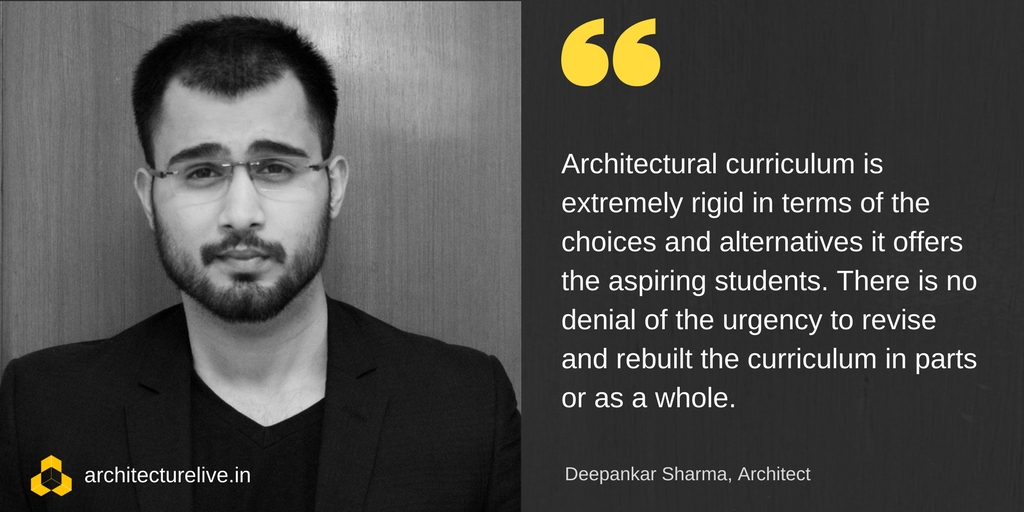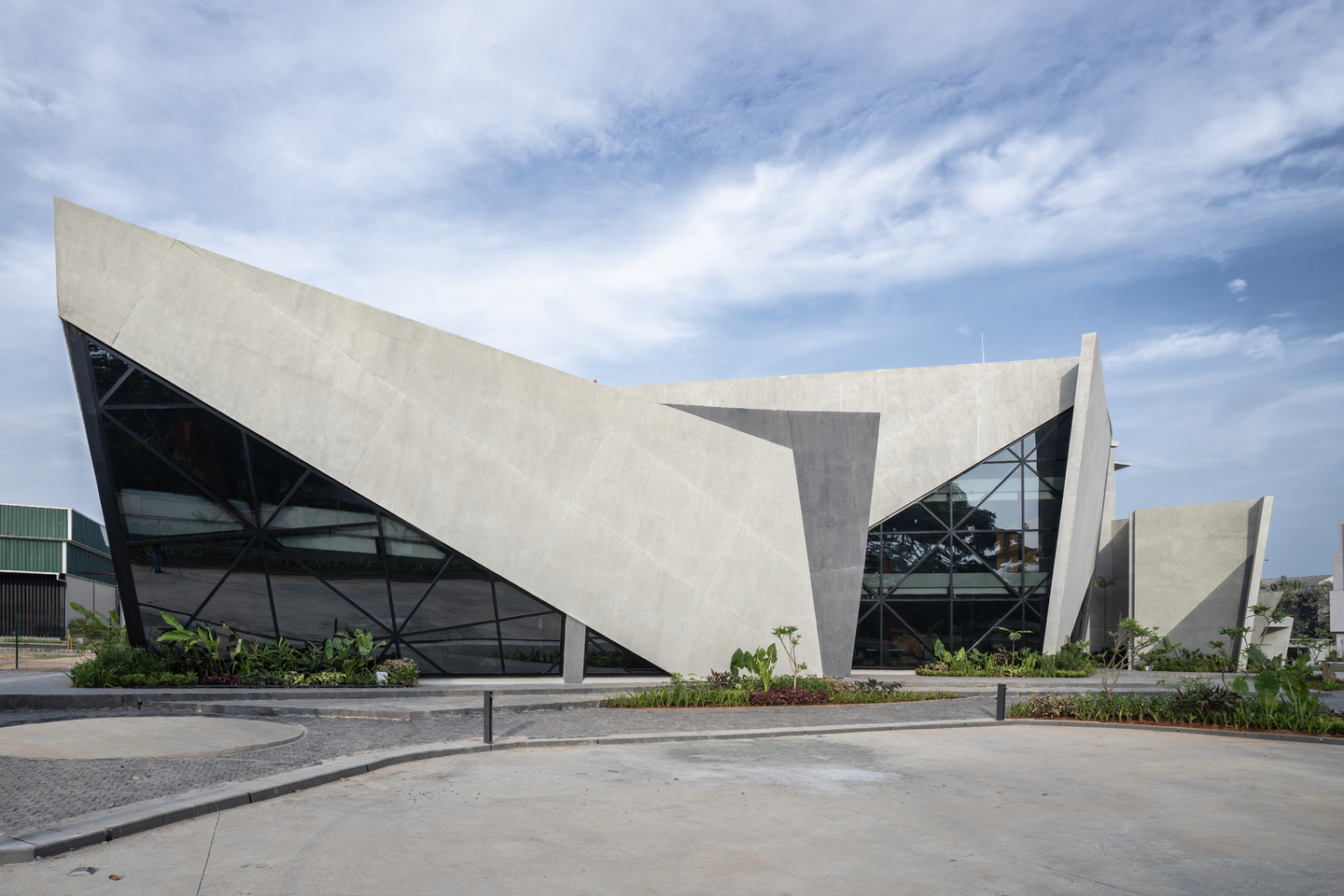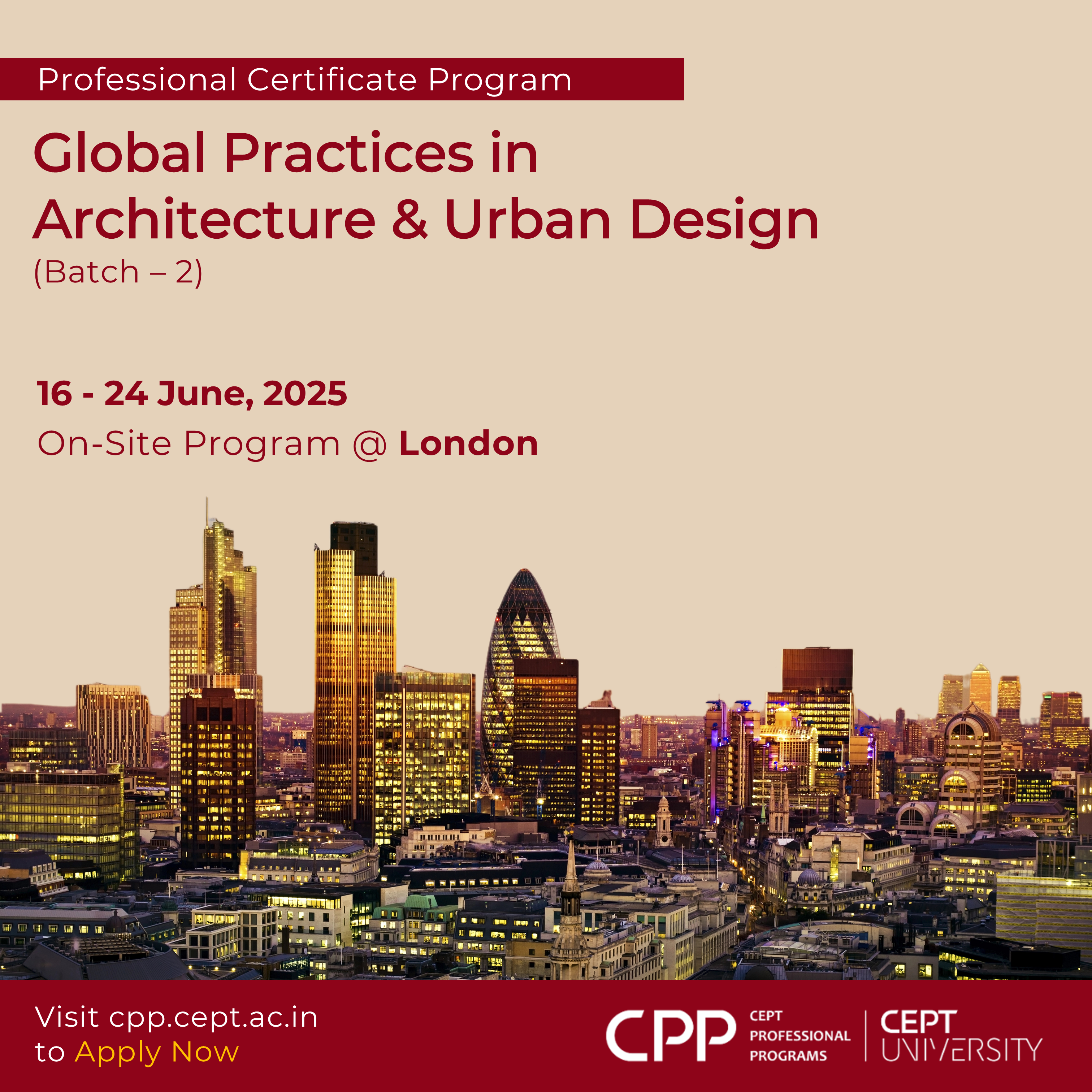“To answer it is paramount to investigate and identify the appropriate question first.”
The smart way of architecture education marks its beginning way before an architecture school. To rectify and revise the way of architecture education, an imperative shift and a major revamp is required at the very rudimentary stages of our education system as well. So, an equally important aspect is to probe the issues inside an architecture school as well as outside, to reiterate a smart way of architecture education.

Satirical visualization | Ridiculing our current education system
ISSUES | EDUCATION SYSTEM (GENERIC)
Not much to our surprise, our education system inevitably needs flexibility and fluidity in regard to the choices that it provides the aspiring students for their future at the very secondary and senior secondary levels. It unintentionally conditions their mind in terms of the opportunities that it offers. It hinders an individual to choose their own path and further enable them to follow something they truly and honestly admire.
Our education system has deteriorated over time and the primitive techniques of imparting education have over the time developed a robotic culture. It is more successful at deliberating the ability and capability of the students on the fixed parameters that were set ages ago, while today we solemnly require flexibility in choosing those parameters itself. For instance, after completing secondary education, if an individual finds himself well equipped to enter an architecture school, which enables him to enhance his skills and develop new skills for the profession (which he eventually chooses), then why is it imperative for him to complete his senior secondary to enter an architecture school.
The aim of education is to inform, educate, enlighten and make an individual fully acquainted with people, objects and issues. Mahatma Gandhi held that “the aim of education is to draw out the best in anyone, man, woman or child”. Drawing out the best paves the way for the information, reformation and transformation of the learner.
We need the system to give the aspiring students, freedom of choosing their fields of interests at very elementary stages (secondary & senior secondary), along with advanced stages of education (graduation & post-graduation).
The same would enable students to discover fields such as art and architecture at the school level, which would further enable them to be sure about their interests by the time they pass secondary or senior secondary education. So, once they enter an architecture school, the students aren’t completely oblivious to the world of architecture and do not require constant spoon-feeding by the faculty in regard to their next step.

Image 2: Satirical visualization | Criticizing the rigidity in our education system
Once an individual with pre-requisite knowledge enters an architectural school, he/she shall be able to form his/her own path in a more systematic and organised manner, in comparison to an individual who entered an architecture school right after completing his/her senior secondary without any previous knowledge about the same.
ISSUES | ARCHITECTURE EDUCATION SYSTEM
Similar issues exist and propagate in architecture schools as well. Since majority of students are incontrovertibly new to the architectural discourse, they have imparted education with an age-old curriculum. It lacks flexibility in terms of the alternatives it provides the aspiring candidates and the only controlled flexibility they are provided with is in their final year research projects. The students are still taught the skills of hand drafting which is certainly in vain in regard to its relevance in the field (professional). There is a huge gap between academia and the profession. There is an imperative and solemn need to address this issue to produce better professionals who are well equipped for the field as and when they graduate.

Image 3: Accustomed Architect’s Workplace around the 50s
The students approach all the given subjects (design, history, building construction, services, and art) in isolation. They have a design studio, a building construction studio, a structures studio and so on. However, even after multiple earnest attempts by the students to collaborate these studios, it remains a futile attempt, as the curriculum distinguishes them as separate entities. While in the profession the scenario is constantly changing. Architects such as BIG Architects from Copenhagen and many others around the globe have hired an engineering team and various consultants for their organization, rather than outsourcing these consultants, as they have realised that collaboration at the initial stages can produce much better designs (due to fewer alterations) than an isolated design which is eventually modified and rectified as per engineers, structural consultant, services consultant and so on.
The curriculum is also very rigid in terms the years that it dedicates to a particular studio. Around the globe colleges such as Architectural Association, London have the flexibility to receive education in 2 stages RIBA 1 and RIBA 2, where the former is considered as a diploma that one shall obtain after 3 years of his graduation while the latter is a complete degree that one obtains after 5 years of his education.
PLAUSIBLE RECTIFICATIONS | EDUCATION SYSTEM (GENERIC)
-
Awareness:
Awareness is paramount in preparing a curriculum or program in regard to any training, architectural or otherwise, for the prospective students and learners. This task can be fruitfully completed after assessing the visible or invisible characteristic, traits, attributes, quality and potentiality of the person. To gain sound awareness of one’s ability, capacity, desire and utility to undergo a specific course or training, it ought to be ensured that the person becomes fully aware of the details of the course, its purposes, it’s opening of avenues and prospects for the individual in a particular profession. The same would be much more impactful if introduced at elementary stages of education, that is, at secondary and senior secondary level.
-
Mitigate Social Conditioning:
The conditioning of mind initiates at the very moment the seed germinates in the mother’s womb. For 9 months, it observes and interprets the world through his mother’s senses. Thereafter, from the birth of a child to the time he graduates, his mind is already 60-70 percent conditioned in terms of the way he perceives the existing scenario (through society’s lens). His ability, capability and potentiality to affect and influence his surroundings are also guided by the same.
The social conditioning of mind needs to be completely diminished so that one starts to see the world and himself through his own eyes. An individual needs to realize, that if he himself understands his potential, and diligently works hard on the same path, he can himself become the agent of change and it is highly likely that he might just revolutionize the way things work in the current scenario. William James vouched “Act as if what you do makes a difference, it does.”
-
Flexible System:
“Man lives like a robot, mechanically efficient, but with no awareness.” –Osho
Rigidity is an obstacle in the implementation of any course in accordance with the changing situation and requirement in the current and emerging scenario. The current education system has become dilapidated and there is an urgent obligation to refurbish the same. An imperative need for an alternative education system has surfaced in the recent scenario.
The education system needs to eradicate the robotic culture that measures the ability, capability and potentiality through the same tests and examinations. It requires exclusive examination programs and their durations for different individuals and students. This would assure quality education among the youth and would yield comparatively better results and skilled individuals.
Such programs promise growth and development of the society as a whole.
PLAUSIBLE RECTIFICATIONS | ARCHITECTURE EDUCATION SYSTEM
 [Image 4: Architectural Drafting Tools]
[Image 4: Architectural Drafting Tools]
Certainly, an individual decision won’t categorically lead to a smarter way in architecture education. It is a group of rational decisions and their pragmatic implementation that might promise the same gradually. There is an inevitable and essential need to revamp and refurbish the existing curriculum in architecture education. The modification in a couple of following areas in the architectural domain could possibly aid and anchor the process of refurbishment:
-
Re-Examining The Tools In Architecture
The tools in architecture are of utmost importance, as the tools enable an architect to express his thoughts and approach pragmatically and rationally. The re-examination of the tools is thus paramount. We also need to question the relevance of aspects of our current curriculum such a hand drafting. However, this doesn’t question the relevance of scaled sketches the one uses to express his initial thoughts.
In parallel, the proficiency in the new tools (software such as AutoCAD, Sketch-up, Rhino, Revit, etc) at elementary stages in architecture, would emphatically aid an individual in producing unconventional results in terms of the designs and research. The same proficiency shall also enhance the qualities of an individual that one eagerly investigates while hiring an architect for his organization. The gap between academia and profession is extensively expanding. Tools taught in the architectural schools form a large part which responsible for the same.
-
More Informed Academic Designs
Every architectural design has the multitude of potential layers of information, analysis, examination, investigation and diagnosis, such as technical specialities, budgets, deadlines, sustainability, management, construction, and the client.
However, the current scenario in academia inclines the student solely towards design and the development and articulation of the same technically and rationally. Academic designs critically require being informed, in regard to the irrefutable multi-layered filtration that it will undeniably undergo in the field. This shall enhance the student’s ability and capability to not merely produce unconventional designs but also supplement an individual’s ability to negotiate and compromise few elements and aspects while retaining the essence and attributes of the original design.
-
Collaborating Studios
We need more flexibility in our architecture education system in terms of making the studios more similar to the profession in terms of the needs and demands. One should not be oblivious to the professional field that he is finally supposed to enter. An individual ought to be well equipped with the skills that the field expects.
The collaboration of multiple studios can be advantageous in numerous ways. Amalgamating subsets (design, history, building construction, services) of architecture education or may be a permutation of 2 or 3 at a time can ensure a clear implementation and application of the lessons imparted in one another.
For instance, if an individual chooses a hypothetical design problem for himself in the design studio, he probes into the possible solution of the same in the history studio, endeavours to develop a contemporary translation of the same and collaborates with the structures studio as well as the services studio to develop it further. Such a process would strengthen the skills of an individual to an extent where he inherently produces relatively better and avant-garde designs. Also, the new tools in architecture could anchor the above process tremendously as technology has a huge role to play in the near future, in terms of rationalizing designs from conceptualization to their realization.
- Restructuring Curriculum & Syllabus
Our curriculum was planned decades ago and has hardly been structurally revised. Minor revisions are ubiquitous but there are seldom major ones that could be considered impactful. The resultant is an obsolete curriculum. Our curriculum is extremely rigid in terms of the choices and alternatives it offers the aspiring students. There is no denial of the urgency to revise and rebuilt the curriculum in parts or as a whole.
The curriculum in architectural discourse needs to be immensely flexible so that it caters to the aspirations of the students. For instance, a five-year program inevitably requires restructuring in terms of the years one dedicates to the complete program, months it dedicates to a particular studio, the duration of practical training, the duration of an individual research projects and the number of projects an individual/student undertakes before and after professional training.
We can’t predict the future of everything, but we can prepare ourselves for the complexities it might offer. Today’s architecture education is full of such ever-increasing complexities with a requirement for a smarter education which would further promise a sustainable future.
Technology has an unquestionably important role as it aids, assists and anchors the architects and designers in the present scenario and provides them with a legitimate tool to deal and cope up with the complexities of design. Thus, it shall be extremely critical and crucial for the graduates and architects to develop a proficiency in the new tools and software so that they can go in parallel with technological shifts.
The entire process highlights the needs and necessities of reviewing, redesigning, redeveloping and revamping the system and structure in architecture education. It will ensure continued improvement and advancement for achieving efficiency, economy, effectiveness and excellence in the execution of numerous innovatively articulated designs in architecture.
“Education is the most powerful weapon that you can use to change the world.” –Nelson Mandela.
 Deepankar Sharma is an architect who recently graduated from Sushant School of Art & Architecture, Delhi. He has won an international award (Rethinking the Future Awards 2017) in first place for undergraduate architectural research “Resurrection & Reinterpretation of an Architectural Icon”. He is a recipient of a scholarship offered by Architectural Association, London for a visiting school in Stuttgart, Germany in 2017. He was one of top the 10 students in India exhibiting Excellence in Undergraduate Architectural Thesis and has received awards and commendations from the Council of Architecture, India under NIASA Undergraduate Awards for Excellence 2016. He was also among the top 18 students shortlisted in South-East Asia to present his undergraduate research at the KV Design Forum 2017 at CEPT University, Ahmedabad. His work has been published and featured on various platforms including books by the Council of Architecture, India.
Deepankar Sharma is an architect who recently graduated from Sushant School of Art & Architecture, Delhi. He has won an international award (Rethinking the Future Awards 2017) in first place for undergraduate architectural research “Resurrection & Reinterpretation of an Architectural Icon”. He is a recipient of a scholarship offered by Architectural Association, London for a visiting school in Stuttgart, Germany in 2017. He was one of top the 10 students in India exhibiting Excellence in Undergraduate Architectural Thesis and has received awards and commendations from the Council of Architecture, India under NIASA Undergraduate Awards for Excellence 2016. He was also among the top 18 students shortlisted in South-East Asia to present his undergraduate research at the KV Design Forum 2017 at CEPT University, Ahmedabad. His work has been published and featured on various platforms including books by the Council of Architecture, India.







